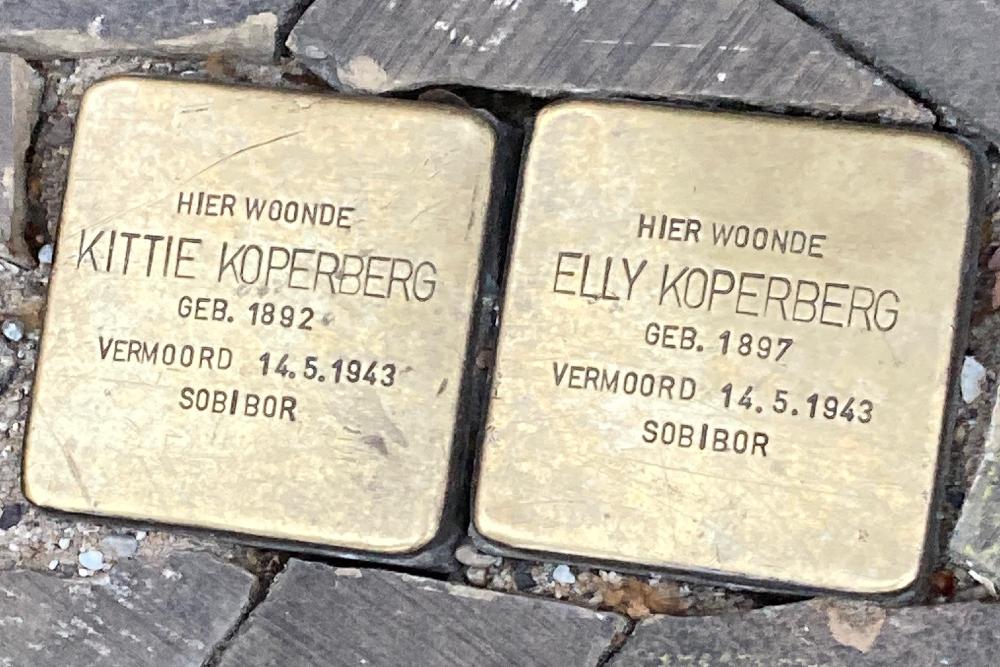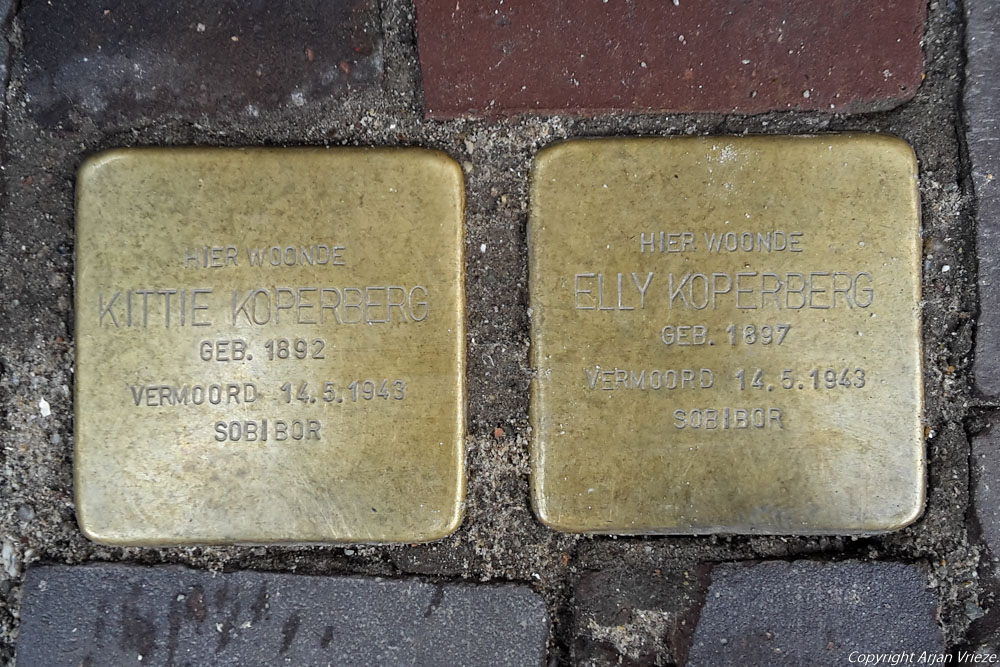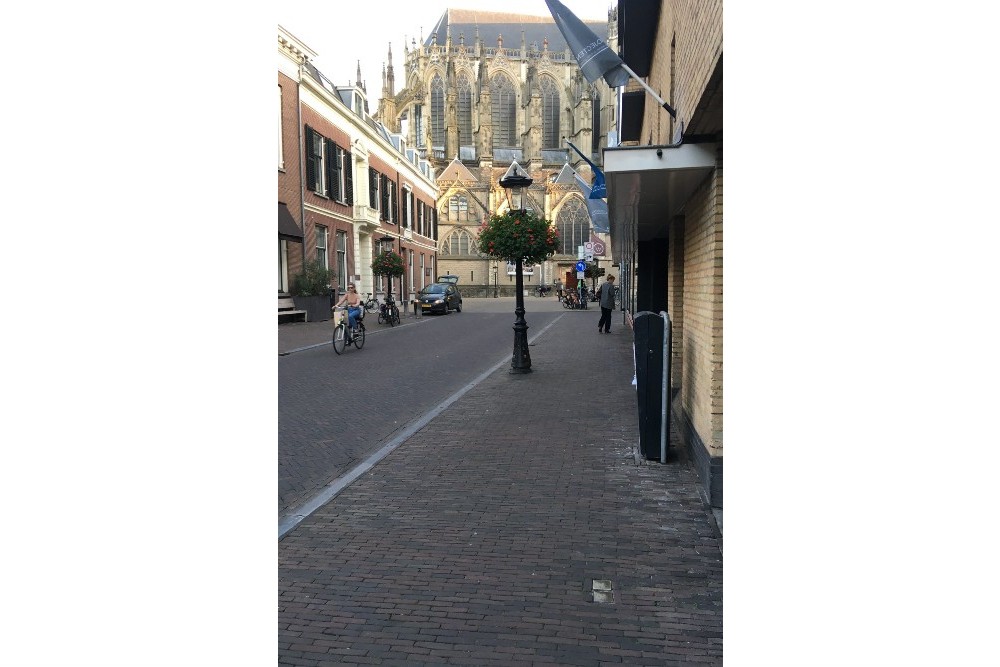Stumbling Stones Domstraat 29-31
These brass plaques (Stolpersteine or Stumbling Stones), laid on 15 April 2017 commemorate:
* KITTIE KOPERBERG, (born 1892, murdered 14.5.1943, Sobibor)
* ELLY KOPERBERG, (born 1897, murdered 14.5.1943, Sobibor)
These Stolpersteine are here for Jewish war victims, persecuted, deported and murdered in World War II.
‘Stolpersteine’ is an art project in Europe by Gunter Demnig to commemorate victims of National Socialism (Nazism). Stolpersteine (trip stones) are small, 10x10cm brass plaques placed in the pavement in front of a residence of (mostly Jewish) victims of the Nazis. Each plaque bears the victim's name, date of birth and their fate. In this way, Gunter Demnig gives an individual memorial to each victim. One stone, one name, one person. He quotes the Talmud: ‘A person is forgotten only when his or her name is forgotten.’
Background
Catharina Helmina Koperberg (called Kittie) and her sister, Ella Julie Koperberg (called Elly) were both born in Weltevreden in colonial Indonesia. The family moved to Utrecht, where their mother died in 1908. Their father remained in the Netherlands and was honorably discharged from service in 1910.
As adults, both sisters worked. Kitty was an assistant at a library of the Dutch national weather service from 1938 until she was fired by Nazi decree in 1940. Elly, who had earned a doctorate from the University of Amsterdam, began studies in biology and the University of Utrecht in 1938 but resigned two years later in solidarity with the Jewish teachers who has been fired. She then became a teacher at the municipal school for commerce.
In September, the sisters decided to go into hiding. They were found, treated as criminals, and taken to the Westerbork criminal barracks on 6 May 1943. Five days later, they and 4 other "criminals" were deported to Sobibor in a transport of 1,446 Jews. It arrived on 14 May. Because of their ages (51 and 45), there is no reason to suspect they would have been selected for labor. Catharina Helmina Koperberg and Ella Julie Koperberg would have been killed in the Sobibor gas chamber on the same day they arrived.
NB. Jewish Monument gives Domstraat 9 bis-b as the residential address. The stones were previously in front of number 5 (old photos 3 and 4) but have been moved to the porch in front of number 29-31.
Do you have more information about this location? Inform us!
Source
- Text: TracesOfWar
- Photos: Vicki Kosmala (1, 2), Arjan Vrieze (3), Johan Bolhuis (4)
- Kitty Koperberg, 1892-1943, by Fons Baede, KNMI, 2017
- Stolpersteine.eu- https://www.joodsmonument.nl/nl/page/41414/domstraat-9-bis-b-utrecht
Nearby
Museum
Point of interest
- Office NSB Representative for state affairs - Utrecht
- NBS District Office Utrecht - Utrecht
- Regional Quarter Nationale Jeugdstorm - Utrecht
Monument
- Resistance Memorial Utrecht - Utrecht
- Memorial victims Utrecht University - Utrecht
- Resistance Memorial Students Utrecht - Utrecht
Cemetery
- Dutch War Graves St. Barbara - Utrecht
- Graves Polish Veterans St. Barbara - Utrecht
- Dutch War Graves Soestbergen Cemetery - Utrecht
Remembrance Stone
- Stumbling Stones Domplein 29 - Utrecht
- Stumbling Stone Vismarkt 17 - Utrecht
- Stumbling Stone Schoutenstraat 12 - Utrecht
Fortification
- German Observationbunker Zandbrug - Utrecht
- German Bunker Wilhelminapark - Utrecht
- Fort De Bilt - Utrecht







